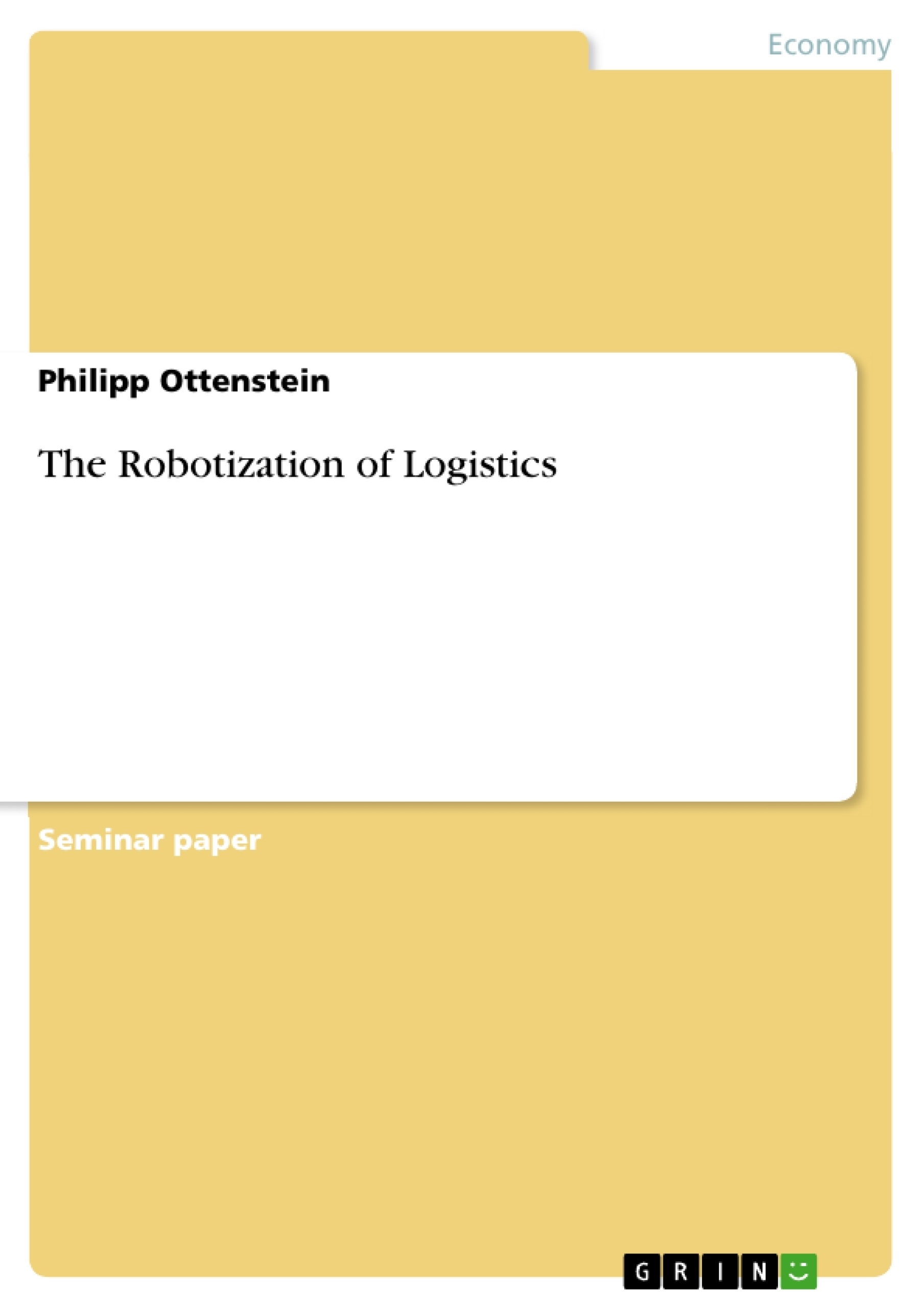The emergence of eCommerce and changed customer needs for faster delivery demand increased levels of logistics excellence and productivity. The need for express deliveries in less than one day represents only one of numerous potential application fields in which robot manufacturers promise that robotization of logistics will make the difference for a competitive advantage.
Critics argue that IT-based and connected systems might increase process efficiency and substitute workplaces. Simple, repetitive jobs are hit earlier than specialized production or service processes. Momentously, consumers are accelerating the development of using sophisticated technology to benefit from cheaper, faster and more powerful solutions. Yet, there is little doubt that robotics will rise to prominence in logistics, but rather when.
Inhaltsverzeichnis (Table of Contents)
- 1 Introduction
- 2 Analysis
- 2.1 Possible application areas of robots in logistics now and in the near future
- 2.2 Requirements concerning robots for the usage in logistics
- 2.3 Potentials and measurement of robotic applications and solutions for logistics
- 3 Conclusion and outlook
Zielsetzung und Themenschwerpunkte (Objectives and Key Themes)
This paper aims to explore the potential use cases of robotic solutions in the field of logistics, analyze the requirements for their deployment, and discuss the advantages and disadvantages of "robogistics" from technological, microeconomic, and macroeconomic perspectives. It explores the role of robotics in addressing the growing demand for logistics excellence and productivity in the age of e-commerce and rapid deliveries.
- The application of robotics in logistics, encompassing areas such as warehousing, sorting, and final-mile delivery.
- The requirements for successful robotic deployment in logistics, including technical specifications, operational considerations, and economic factors.
- The potential benefits and drawbacks of "robogistics" in terms of efficiency, cost-effectiveness, and workforce implications.
- The impact of robotic solutions on the logistics industry, including its effect on supply chains, operations, and business models.
- The future of "robogistics" and its potential to revolutionize the logistics sector.
Zusammenfassung der Kapitel (Chapter Summaries)
- Introduction: The chapter introduces the growing need for logistics excellence and productivity driven by e-commerce and customer demand for faster deliveries. It outlines the potential applications of robots in logistics and presents the paper's objectives.
- Analysis: This chapter delves into the potential application areas of robots in logistics, covering various stages of the supply chain, such as warehousing, sorting centers, and distribution logistics. It showcases specific use cases and explores the advantages of implementing robotic solutions compared to previous industrial revolutions.
Schlüsselwörter (Keywords)
Robogistics, logistics automation, robotic solutions, supply chain optimization, e-commerce, delivery, warehousing, sorting, autonomous vehicles, workforce implications, economic impacts, future trends.
- Quote paper
- B.A. Philipp Ottenstein (Author), 2016, The Robotization of Logistics, Munich, GRIN Verlag, https://www.grin.com/document/386923



